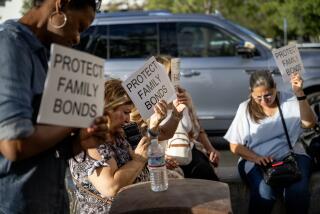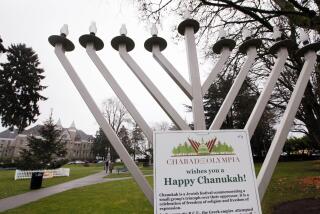A Flourishing Tradition
- Share via
Who are the Hasidim?
Some call them ultra-Orthodox Jews, a label they reject.
Still, with their distinctive garb and Old World traditions, they do appear to be different. The Southland’s most visible Hasidim are followers of the Chabad Lubavitch movement.
Known by outsiders primarily for the social services it provides, Chabad is controversial within the Jewish community. The group believes that the world is nearing the coming of the Messiah--the Savior promised in ancient biblical prophecies. Moreover, many Lubavitchers believe that the group’s former rebbe (spiritual leader), Rabbi Menachem Mendel Schneerson, who died in 1993, may have been the Messiah--a contention other Jews dismiss.
Rabbi Boruch Shlomo Cunin, the movement’s West Coast director, estimates that Chabad Lubavitch has 75,000 “supporting families” in California and Nevada, including “many involved in the movement who do not look [dress traditionally] like us.”
Headquartered in Brooklyn, the movement now has 2,500 centers worldwide and through its “mitzvah mobiles,” or traveling minivans, reaches out to non-observant Jews who, in the rabbi’s words, simply need a little “dusting off.”
With their high birthrate and opposition to intermarriage with non-Jews, the Lubavitchers’ numbers have increased dramatically since the late Rabbi Schneerson, having fled war-torn Europe for America, became the movement’s leader in 1950. Today, there are several hundred thousand people worldwide who identify with Chabad Lubavitch.
Hasidic men and women have distinctly different roles. For the Hasidim, the home is the center of life, and it is there that Hasids believe women have their most important role--to mold the lives of the children so they may lead a fulfilled Jewish life.
More to Read
Sign up for Essential California
The most important California stories and recommendations in your inbox every morning.
You may occasionally receive promotional content from the Los Angeles Times.












